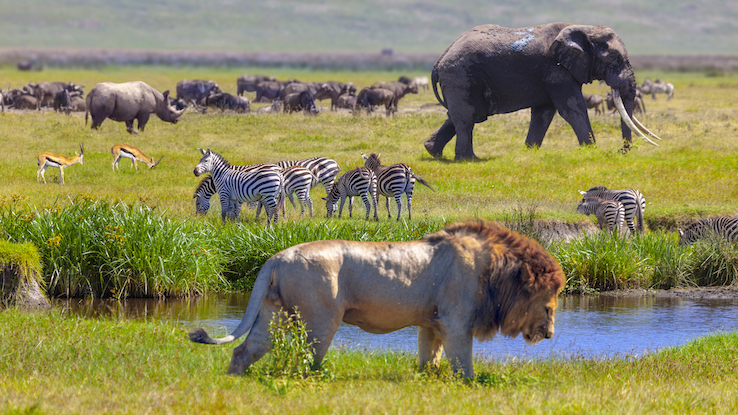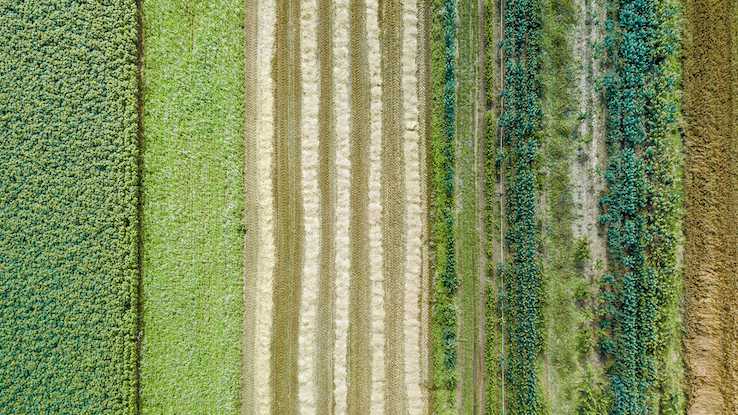These Are the Five Biggest Threats to Biodiversity

Just as diversity celebrates differences among groups of people, biodiversity concerns the differences among species in the natural world. Biodiversity is the reason the earth is so beautiful and exciting.
Biodiversity allows the earth to sustain many different ecosystems. For example, worms aerate the soil to help flowers grow, bees use flower pollen to feed their young and humans use honey for food. Every living creature is dependent on the others to survive.
What Is a Biodiversity Hotspot?

A biodiversity hotspot is a part of the world with naturally high levels of biodiversity that is currently under threat due to invasive and destructive human activity. A scientist named Norman Meyers coined the term “hotspot” in the context of biodiversity in 1989.
There are two sets of criteria that qualify an area as a hotspot. First, the area must have 1,500 or more different vascular plants that only grow in that area. Second, the region has to have lost 70% or more of its indigenous plants due to human interference and destruction.
There are a total of thirty-six biodiversity hotspots around the world that have scientists, conservationists and environmental activists concerned. Biodiversity is essential for the continuation of life on earth, as almost every ecosystem is interconnected and therefore dependent on the other. The downfall of one ecosystem is not a singular event. Rather, when one ecosystem suffers, several other ecosystems suffer too.
For example, the Amazon Rainforest has incredible biodiversity, and people often refer to it as “the lungs of the earth.” The Amazon is also a biodiversity hotspot, as the region continuously faces serious threats from deforestation and ongoing forest fires. The Amazon Rainforest is solely responsible for producing 20% of all oxygen in our atmosphere. Every human and animal is affected by the high rate of deforestation currently taking place in the Amazon Rainforest.
What Are the Main Causes of Biodiversity Loss?

Biodiversity loss happens when one or multiple species within a specific area or ecosystem experience a population decrease. This process will often become evident over a long period of time. It may take several years for a single tree species to be wiped out from a forest, and it may take several years more for the animals dependent on that tree for shelter and food to slowly decline in population size.
Biodiversity loss can occur quickly, whereby a species becomes extinct over a short period of time. Biodiversity loss turns an area that was once a haven of natural life into an at-risk biodiversity hotspot. Why does biodiversity loss happen? Scientists have identified the main, largely preventable, reasons.
Habitat Loss
When human actions destroy or damage a natural habitat, the animals or plants within that habitat can either perish from a lack of resources or be forced to migrate to a different, less favorable habitat.
Deforestation is a massive contributor to habitat loss and biodiversity loss. When even a single tree is cut down, the repercussions affect multiple living creatures — everything from the fungi living on those trees to nesting birds to the animals that eat the tree’s fruit or leaves. What may seem like a slight loss will always trickle down the food chain, having significantly damaging effects.
Pollution
Pollution is the presence of a material or chemical that causes damage to an ecosystem or environment. Plastic and garbage in the ocean can be ingested by sea life, or cause harm to coral reefs. Air pollution leads to sulfur and nitrogen in the air, water and soil. This creates a more acidic climate, which is less sustainable for plant and aquatic life. Air pollution is also a huge contributor to ozone depletion, which increases the effects of climate change.
Overexploitation
Earth is full of natural resources. Fossil fuels, clean drinking water, wood, vegetables, fish and meat are just a few of the natural resources that humans depend on for survival. People’s use of earth’s natural resources has progressed from the days of hunter-gatherers and subsistence farms who would only take what they needed for survival, to greed and overexploitation of these resources,
Today, the depletion of the earth’s limited natural resources is an organized industrial effort. People’s abuse of natural resources is a direct contributor to the decrease and extinction of many species around the world. For example, over 30% of earth’s shark populations are nearing extinction due to overfishing. This is an example of how man’s environmental impact can seriously disturb the prey-predator relationship and symbiotic relationships when any species declines.
Invasive Species
An invasive species is any species that is not indigenous to the environment they occupy. A single invasive species can cause a chain reaction of biodiversity loss. When introduced, usually by humans, the invasive species can grow out of control because it does not have natural predators in this new environment. Meanwhile, the invasive species becomes a superpredator if the other species that already naturally exist within that ecosystem become its prey. Invasive species can drive their prey to extinction.
Climate Change
Climate change has resulted in an increase of the earth’s temperature. Climate change is also a contributor to natural disasters that further destroy habitats and lead to the sudden death of thousands of species. Forest fires and an increase in destructive hurricanes are both linked to climate change.
Efforts to Remedy Biodiversity Hotspots

Scientists and governments worldwide continue to propose methods for stopping the rampant biodiversity loss taking place around the world. Conservation and efforts to reduce climate change are needed to protect the earth’s most vulnerable and vital ecosystems.
We hope this article has taught you the importance of protecting biodiversity hotspots, as well as how important biodiversity is to the continuation of all natural life on earth.





